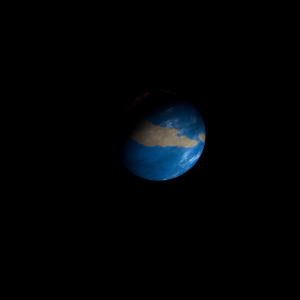|
|
Space Astro
|
Info for exoplanet "Tarait-kahali"
| Scientific (actual) data |
|---|
| Name | Kepler-666 b |
| Planet status | Confirmed |
| Radius | 0.214 |
| Orbital period | 4.49876 |
| Discovered | 2016 |
| Updated | 2021-02-05 |
| Tconj | 2455000 |
| Publication | Announced on a website |
| Detection type | Primary Transit |
| Alternate names | 2MASS J19534964+4847297 b, K00762.01, KIC 11153539 b, KOI-762 b, KOI-762.01, WISE J195349.64+484729.7 b |
| Star name | Kepler-666 |
| Right ascension | 298.46° |
| Declination | 48.79° |
| Mag j | 14.199 |
| Mag h | 13.853 |
| Mag k | 13.807 |
| Star distance | 1330 |
| Star metallicity | 0.01 |
| Star mass | 1.03 |
| Star radius | 1.05 |
| Star age | 3.8 |
| Star temperature | 5887 |
| Star alternate names | 2MASS J19534964+4847297, KIC 11153539, KOI-762, WISE J195349.64+484729.7 |
| Wikipedia article | Kepler-666 b |
Back
| |
| Fictional info (?) |
|---|
| Suggested name | Tarait-kahali |
| Planet type | Cold planet |
| As seen from Kepler-666, in a frame of reference that rotates with the orbital motion, it appears to rotate only once every two years.
It was the one of the first exoplanets visited by a spacecraft, and one of the first to be successfully landed on.
troublesome ride.
The largest moon is occupied by barbaric yet advanced aliens that survive in caves by devouring another species called Kateone if they need to. Paphaë-neso are closely related to Skake-mir but have 6 legs and vary in length from 29 to 36 cm. Most Paphaë-neso can endure temperatures from 40 to 60°C and severe infection. |
| Estimated population | 5000000000 |
| Atmosphere | Carbon dioxide | 99% |
| Methane | 0.39% |
| Water | 0.16% |
| Oxygen | 9.6E-5% |
| Atmospheric pressure | 40 bar |
 |
| Moon | Nandde-dire | Huge slightly egg-shaped rocky asteroid |
| Google search for Tarait-kahali |
|
Website by Joachim Michaelis
|
|
|
|